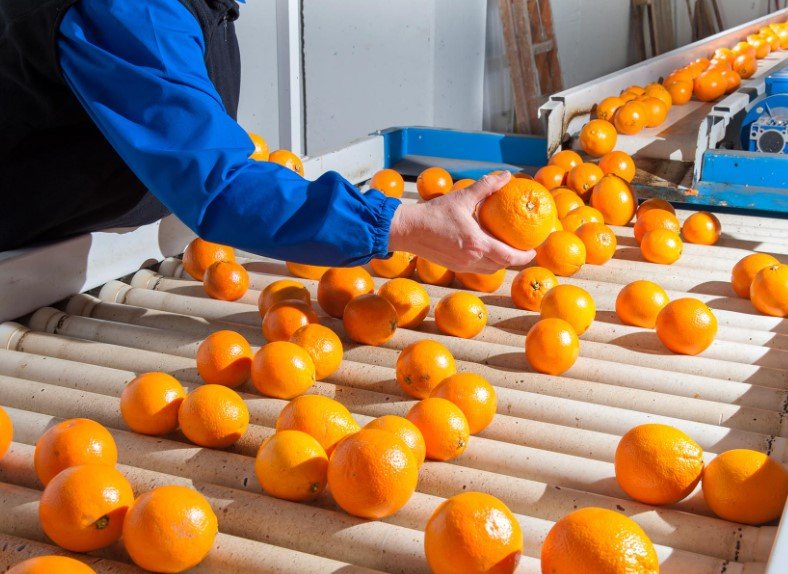Fruit and vegetable exports remain the lifeblood of Egypt’s agri-sector as government pushes to cement its place on global food map
Egypt’s fields are delivering — and in bulk. The country shipped 5.2 million tonnes of agricultural exports in the first half of 2025, a healthy sign that its citrus and potato sectors are still punching well above their weight in a volatile global food economy.
Citrus fruits once again topped the charts with around 1.8 million tonnes, followed by a strong showing of 1.2 million tonnes of potatoes, according to a report submitted to Agriculture Minister Alaa Farouk from the Central Administration for Agricultural Quarantine.
That’s not just a bunch of oranges and spuds. It’s a multi-billion-pound cornerstone of Egypt’s agri-economy — and it’s powering through global disruptions like currency pressure, export finance shakeups, and red tape around food safety.

Citrus: Egypt’s Golden Crop Is Still the Global Darling
Oranges, lemons, mandarins—you name it, Egypt’s probably already sent a crate of it somewhere. Citrus isn’t just fruit here; it’s currency.
The country’s citrus exports have not only held steady but grown, despite growing regional competition and tighter import regulations in Europe and Asia. Egypt’s ability to maintain quality while scaling volume is earning global trust.
Just one sentence here.
Europe, Russia, Saudi Arabia, and China continue to be among the top importers of Egyptian citrus.
• Egypt is now the world’s largest orange exporter, outranking Spain in several key markets.
Ministry officials say this is no accident. Government-backed inspection processes, strict export protocols, and private sector partnerships are making sure nothing sour gets past customs. “We’re proving our name as a reliable supplier,” one Cairo-based exporter told Daily News Egypt. “Even during port delays or droughts elsewhere, Egypt delivers.”
Potato Performance Gets A Market Makeover
You wouldn’t think a potato could be glamorous. But in Egypt’s export circles, it’s getting there.
With 1.2 million tonnes exported in the first six months alone, the humble potato is now Egypt’s second-largest agri-export crop. And it’s not just being stuffed into sacks and shipped off. There’s a growing sophistication behind the scenes—from climate-controlled storage to better packaging and varietal improvements.
One sentence for pacing.
Ireland, Germany, Italy, and the Gulf states are prime destinations. Exporters are also capitalizing on Egypt’s early-season harvest window, which lets them hit shelves before European rivals even start digging.
Here’s a simple table to show how some of Egypt’s top agricultural exports performed in H1 2025:
| Export Crop | Volume (Tonnes) | Global Rank |
|---|---|---|
| Citrus | 1,800,000 | #1 |
| Potatoes | 1,200,000 | #4 |
| Onions (fresh) | 168,000 | — |
| Beans (dry/fresh) | 136,000 | — |
| Sweet Potatoes | 103,000 | — |
Beyond the Usual Suspects: Beans, Garlic, and Grapes on the Rise
While oranges and potatoes grab headlines, the supporting cast is stepping up. Exports of onions, beans, sweet potatoes, and grapes are showing consistent yearly growth.
Just one sentence.
In particular, garlic and strawberries are enjoying a quiet export renaissance. Their volumes may not match citrus, but their margins certainly tempt exporters.
Exporters say niche crops offer more flexibility. “Grapes, strawberries—they let us move into premium markets. Asia wants them. Europe wants them,” said a grower in Gharbia. “They’re not always about volume, they’re about quality.”
And the government seems to agree. There’s renewed support for expanding high-value crops, especially those that meet phytosanitary and residue compliance standards for strict markets like Japan and South Korea.
Quality, Safety, and Soft Power in a Global Food Fight
Minister Alaa Farouk wasn’t shy about what the numbers mean: Egypt wants to be the region’s agricultural export hub.
He emphasized the state’s commitment to quality control, food safety, and certification processes—everything that makes Egypt’s produce shelf-ready from Berlin to Bangkok.
One-liner here for rhythm.
“Our products are getting accepted faster. That means more markets. More foreign currency. More jobs,” he said in the press release.
And make no mistake, there’s strategy behind this.
• Export earnings help offset Egypt’s ballooning food import bill.
• Foreign currency inflows from agriculture support central bank reserves.
• Agri-exports also boost rural employment and stabilize smallholder incomes.
All of this comes as Egypt looks to modernize irrigation, improve post-harvest handling, and boost farmer training programs—all tied to global competitiveness.
Weather, Water, and the Hard Limits of Growth
But even as the numbers shine, some exporters are watching the skies. Climate volatility is becoming a real threat.
Hotter summers, water scarcity, and shifting rainfall patterns are squeezing margins. “You can’t grow your way out of a heatwave,” one Nile Delta farmer quipped.
Others are worried about overreliance on just two or three crops. If one fails, the ripple effect could hit logistics, pricing, and seasonal employment.
“Diversification isn’t a luxury anymore,” warned a supply chain analyst. “It’s survival.”
And then there’s the currency angle. With the pound under pressure, exporters love the forex inflow—but importers of seed, fertilizer, and packaging are feeling the pinch.
Still, industry players remain optimistic. Egypt’s got the land, the labor, and the logistics. The trick is keeping pace with shifting demand—and doing it without draining the Nile dry.
